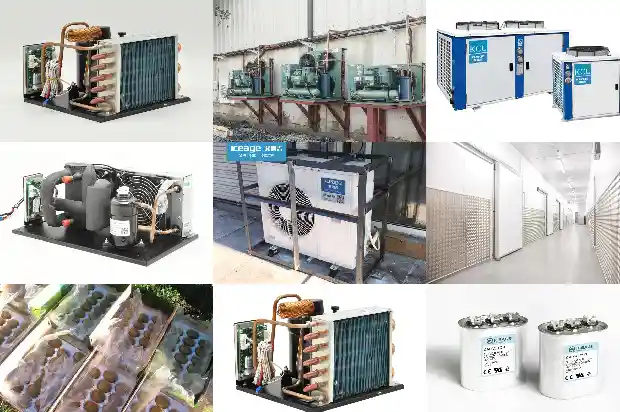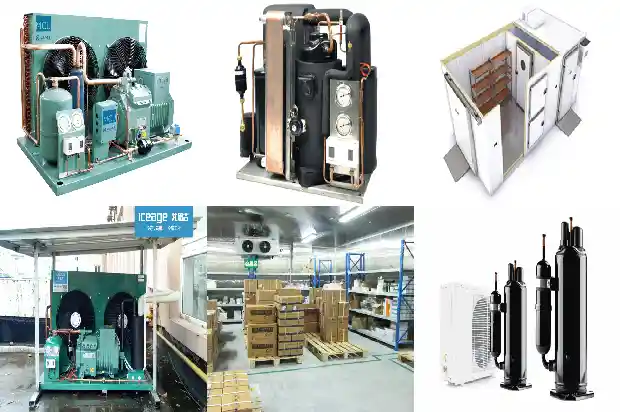Four Combustible and Explosive Refrigerants: Precautions When in Use!
2025-02-16
- R32 Refrigerant
R32, also known as difluoromethane or fluorodicarbon, is colorless and odorless, with a safety rating of A2. R32 is a Freon substitute with excellent thermodynamic properties. It has a low boiling point, relatively low vapor pressure and pressure, a large coefficient of performance, zero ozone depletion potential, a small global warming potential, and is combustible and explosive. Its combustion limit in air is 15% - 31%, and it will burn and explode when encountering an open flame.
R32 has a low viscosity coefficient and a high thermal conductivity. Although R32 has many advantages, it is a combustible and explosive refrigerant. Air - conditioner installation and maintenance are already dangerous jobs. Now, with the uncertainties of R32, safety issues must be considered. When installing and welding R32 refrigeration equipment, vacuuming is required.
- R290 Refrigerant
R290 (propane) is a new - type environmentally - friendly refrigerant mainly used in central air - conditioners, heat - pump air - conditioners, household air - conditioners, and other small - scale refrigeration equipment. As a hydrocarbon refrigerant, R290 has an ODP value of 0 and a GWP value of less than 20, which has obvious environmental advantages compared with common refrigerants, as shown below: - The ozone - layer - destruction value of R22 refrigerant is 0.055, and its global - warming potential is 1700.
- The ozone - layer - destruction value of R404a refrigerant is 0, and its global - warming potential is 4540.
- The ozone - layer - destruction value of R410A refrigerant is 0, and its global - warming potential is 2340.
- The ozone - layer - destruction value of R134a refrigerant is 0, and its global - warming potential is 1600.
- The ozone - layer - destruction value of R290 refrigerant is 0, and its global - warming potential is 3.
In addition, the R290 refrigerant has characteristics such as a larger latent heat of evaporation, good fluidity, and energy - saving. However, due to its combustible and explosive properties, the filling amount is limited, and its safety rating is A3. When using the R290 refrigerant, vacuuming is required, and open flames are prohibited because it can form an explosive mixture when mixed with air (oxygen), and there is a risk of combustion and explosion when encountering heat sources and open flames.
- R600a Refrigerant
R600a, isobutane, is a new - type hydrocarbon refrigerant with excellent performance. It is derived from natural components, does not damage the ozone layer, has no greenhouse effect, and is environmentally friendly. Its characteristics include a large latent heat of evaporation, strong cooling capacity, good fluidity, low delivery pressure, low power consumption, and a slow load - temperature - recovery rate. It is compatible with various compressor lubricating oils. It is a colorless gas at normal temperature and a colorless transparent liquid under its own pressure. R600a is mainly used to replace the R12 refrigerant and is now mostly used in household refrigerator equipment.
The explosion - limit volume of the R600a refrigerant is 1.9% - 8.4%, and its safety rating is A3. It can form an explosive mixture when mixed with air, and there is a risk of combustion and explosion when encountering heat sources and open flames.
It reacts violently with oxidants. Its vapor is heavier than air and can spread to a considerable distance at a lower place. When encountering a fire source, it will flash back.
- R717 (Ammonia) Refrigerant
Ammonia is more dangerous compared to the above three refrigerants. It belongs to the toxic medium category with a toxicity level of 2. When the volume concentration of ammonia vapor in the air reaches 0.5 - 0.6%, a person staying in it for half an hour can be poisoned. The properties of ammonia determine that the ammonia system must be operated and maintained in a standardized manner, and refrigeration workers should pay attention when using it.
Ammonia is a medium - temperature refrigerant. Pure ammonia has no adverse effects on lubricating oil, but when there is moisture, it will reduce the lubricating effect of the refrigerating oil. In the ammonia refrigeration system, copper and copper alloys are not used for pipes and valves. The advantages of ammonia as a refrigerant are: it is easy to obtain, has a low price, moderate pressure, a large unit refrigeration capacity, a high heat - release coefficient, is hardly soluble in oil, has a small flow resistance, is easy to detect when leaking, does not damage the ozone layer, and has no greenhouse effect. Its disadvantages are: it has a pungent odor, is toxic, can burn and explode, and has a corrosive effect on copper and copper alloys.
When the volume of ammonia vapor in the air reaches 0.5 - 0.6%, it can cause an explosion. Therefore, the concentration of ammonia in the air in the machine room shall not exceed 0.02mg/L. Ammonia is a combustible gas at normal temperature. Its explosion limit is 16% - 25%, the most easily ignited concentration is 17%, and the concentration at which the maximum explosion pressure is generated is 22.5%.
Related Articles
- Scheme for the Use and Safety of Ammonia Refrigerants
- Introduction to the Relationship between Refrigerants and Cold Storage Temperatures
- Four types of flammable and explosive refrigerants
- Performance of Eco-friendly Refrigerants 410A and R407C
- The characteristics and uses of 26 types of air conditioning refrigerants
- Precautions for Using Rotary Refrigeration Compressors
- Precautions for Commissioning of Screw Parallel Units
- Accident Handling and Precautions for Circulating Water Pumps
- What Precautions Should Be Taken When Using a Fresh - keeping Cold Storage in Summer?
- Operations and Precautions for Multi - split Air Conditioners: Blowing Debris, Air Tightness, Vacuum Drying, and Refrigerant Charging
- Precautions for the Installation and Use of Water Flow Switches
- Precautions for the Hot Gas Bypass Valve of Refrigeration Units in Cold Storage
- Precautions for Inspecting Valves in Refrigeration Systems
- Parallel Installation and Precautions for Scroll Compressors
- Installation and Oil Return Precautions for Refrigeration Equipment Pipelines
- Precautions for Replacing Refrigeration Compressor Refrigerant Oil
- Precautions for Cold Storage Design
- What Are the Common Causes of Cold Air Blower Noise?
